Chris Baty's Blog, page 159
September 17, 2015
Ready, Set, Novel!: A Guide to Grow Your Novel’s World
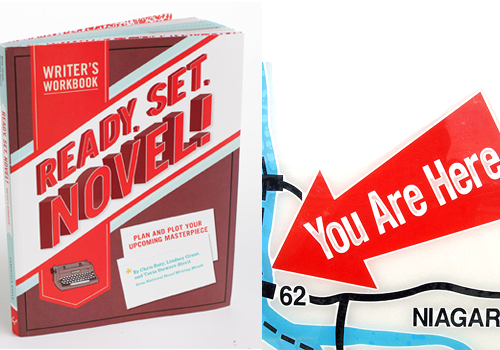
It’s officially #NaNoPrep season! Inspired by the creativity and motivational prompts in Ready, Set, Novel!—written by our own Chris Baty, Lindsay Grant, and Tavia Stewart-Streit—we’re bringing some of our favorite writing exercises to you. Today, we’re asking “What if?”:
Sometimes, something as simple as a sock on the floor is enough to trigger a memory. Think of setting as that sock: it is there to help guide your characters in their journey through the pages of their life.
Setting tells a lot more about a story than you’d think, and can also aid and influence your characters in their decisions. (Some of those decisions may include:
whether or not they should surf during a hurricane, what they need to do to bake that pie with a malfunctioning oven,whether or not to put on an extra jacket because it is slated to snow and really, there is nothing fun about freezing to death.)Knowing your setting will not only help your character figure out where they want to grab breakfast, but will also give you tools to help you tackle those awkward moments where you don’t know what to say.
Let this growing map inspire you as you prepare to tackle your novel this November:
The NeighborhoodYour character lives somewhere, whether it be in a 200-square-foot, corner apartment in the Upper East Side, or a countryside manor in an 1800s Japanese town.
Write about the neighborhood that your character lives in. What do they see when they walk out the door or down the street? Do they love where they live? Are they trying to escape? Why is your character currently living where they are?
That neighborhood that your character lives in? Well, it exists in a city. This city, town, or village contains people that your character doesn’t know.
What does this city look like? Do people fall into a routine? Is it a nice place to live? What does your character think of the city’s other neighborhoods? What are the people like here?
The WorldThat neighborhood and city both live in something much larger: your world. But what kind of world is it?Is it one the readers are familiar with, or nothing that has ever been seen before? What kind of people, animals, and buildings are there? Is there a transportation system? Was your character born into this world, or did they find it by chance? What is the most popular fast-food chain (do fast-food chains even exist)? What are people like in other countries than the one your character grew up in?
Top right photo by Flickr user Quasimondo.
September 16, 2015
Ready, Set, Novel!: The Power of What-If
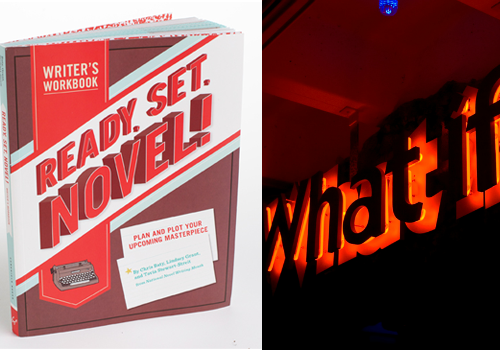
It’s officially #NaNoPrep season! Inspired by the creativity and motivational prompts in Ready, Set, Novel!—written by our own Chris Baty, Lindsay Grant, and Tavia Stewart-Streit—we’re bringing some of our favorite writing exercises to you. Today, we’re asking “What if?”:
Asking what-if is a time-honored writer’s tradition. Famous what-ifs include: “What if a girl volunteered to enter an arena where kids fought to the death?” and “What if the story of Cain and Abel took place in Central California?”
Having a list of emergency what-ifs can be a lifesaver in November. Here are a few different what-if lists you might construct:
The What-If-You-Were-Here ListMake a list of places that interest you. It can be places you want to travel to, the dark side of the moon, fictional locales… anything.
When you’re stuck, sometimes tossing a new setting into the mix (or even just the discussion of a new setting—Santa Fe and Jack Kelly, anyone?) can shake loose some inspiration.The What-If-I-Gave-Myself-No-Limits List
Make a writer’s bucket list. Include everything you’ve always thought it would be fun, and/or challenging to write that you just haven’t gotten around to yet.
Maybe you’ve always wanted to write a Jane Bond. Maybe there’s a fanfic rarepair you’ve yet to write. Maybe you want to fictionalize that family history that’s been begging for some literary attention.The What-If-There-Were-a-Catastrophe List
List your ten favorite novels, movies, or TV episodes. Then for each story on that list, write down the absolute worst thing that happened in it. Betrayal? An unexpected and unrequited love? An inconsequential, meaningless death?
When you’re bored, subject your characters to this catastrophe. Adapt it, of course, if need be to your novel, but remember this is to help you jog your brain loose! Sometimes it doesn’t have to make complete sense.Top photo right by Flickr user Mountainbread.
September 15, 2015
Ready, Set, Novel!: Character Profiling
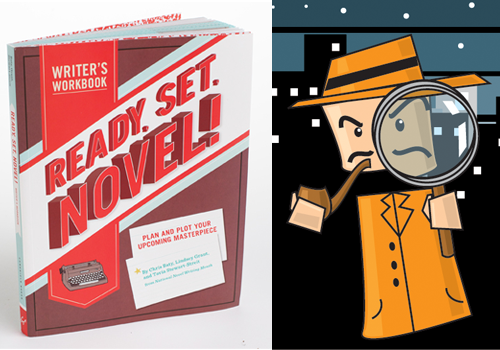
It’s officially #NaNoPrep season! Inspired by the creativity and motivational prompts in Ready, Set, Novel!—written by our own Chris Baty, Lindsay Grant, and Tavia Stewart-Streit—we’re bringing some of our favorite writing exercises to you. Today, we’re tackling a character worksheet:
Sometimes everything about your character just comes naturally from your fingertips, and other times, you don’t know your character so well. Are you facing the latter? That’s okay!
We’re here to help with:
A basic character profileA personality assessment
Some capability scenarios
A handful of… different character exercises
The BasicsName:
Date of Birth:
Gender:
Cultural Background:
Current Location:
The Personality AssessmentWhere does your character like to hang out?
What is your character passionate about? Politics? Religion?
How does your character feel about their family? (Be honest.)
What’s your character’s pet peeve?
Does your character have any guilty pleasures?
A Capability TestYour character locks their wallet, keys, and cell phone in the car. What do they do?What kind of eater is your character? For example, would they kick butt in an eating competition? Or do they subsist on the bare essentials?Your character gets drunk with their worst enemy. What goes down?Your character’s main love interest demands that they prove their love. How does this go?Here’s Where Things Get WeirdTake a Buzzfeed personality quiz as your character. Take a few. …Stop at eight. That’s probably enough.
Your character takes a selfie, however that may manifest in your world. Please describe in detail this selfie and the circumstances that led to it.
Your character hops through time and space to arrive in our current circumstances. Your character joins Twitter immediately (duh). Craft your character’s first 140-character tweet.
Please select four photos that make up your character’s Tumblr aesthetic.
Ready, Set, Novel! is brought to you by NaNoWriMo all-stars Chris Baty, Lindsey Grant, and Tavia Stewart-Streit. Designed to get your feet wet and hands dirty in the days, weeks, or months before noveling, contains character profile templates, exercises to help you find your plot, a ready-to-color outline of Gustave Flaubert, and… could it be? Yes, more!
Top right photo by Flickr user olarte.ollie.
September 14, 2015
3 Tips for Writing Success with Kindle Worlds
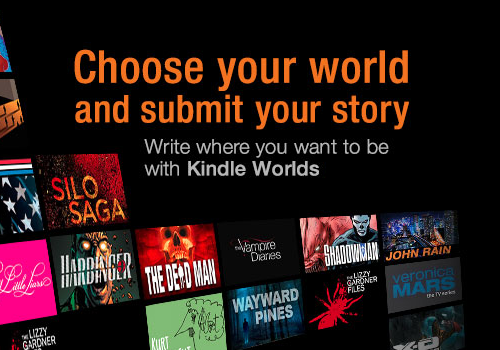
Every year, we’re lucky to have great sponsors for our nonprofit events. Kindle Worlds, a 2015 Camp NaNoWriMo sponsor, asked author Cat Johnson to share her three tips for writing success… and how she used them to finish a story within an established World:
As far as I’m concerned, any day a writer finds the time, energy and inspiration to write it’s a win, but in the NaNoWriMo world, an official “win” is reaching that 50,000 word threshold by November 30. Some years I’ve accomplished that win, others I haven’t, and looking back I can attribute a successful NaNo month to a combination of three things. It doesn’t matter whether you’re writing your first novel or your 51st, I think we all need a goal, support and inspiration.
Here is my personal trifecta, the perfect storm for writing success…
1. “You gotta have a goal. Do you have a goal?”This line from Pretty Woman (1990) is as true for writers as it was for Julia Roberts’ character. It’s the reason I first decided to try NaNoWriMo almost a decade ago, and why I continue to participate annually, because without that goal of 1,667 words a day and 50,000 by the end of the month it’s too easy to wander aimlessly like a traveler without a destination. Or worse, to decide to sit this trip out completely. NaNo provides both the destination and the roadmap to get you there.
Writing is a lonely profession. I spend more time with my work in progress than with my family, but that doesn’t mean I toil alone. NaNoWriMo always gave me a sense of being part of a larger group as we all work toward a common goal. I find myself seeking interaction with other writers at other times of the year but it never seems as strong as that NaNo connection.
3. Inspiration.Call it a muse if you want, but to me it’s a spark of an idea I can get excited about. One that gets the adrenaline pumping and gets my butt in gear—not because I have to write the story, but because I want to write it. That’s when the words really start to fly.
NaNoWriMo builds our writing muscles and hones our “authorly” skills; I find myself using the techniques I learned in November whenever I face a writing challenge. I utilized my NaNo skills and the three steps outlined above when, in the middle of an already packed schedule of writing deadlines, I decided to write a story for Amazon’s Kindle Worlds program, which allows you to write within worlds created by other authors, or “Kindle Worlds”. I didn’t have the time, but I really wanted to do it, so I did. Here’s how my three steps got me through, all the way to the win, publishing my novella, Game On, in Bella Andre’s “Game for Love” Kindle World.
I took the total word count I needed and the time I could wedge into my schedule to devote to the story, did the math and set a daily manageable goal for myself.
Why? I wanted that sense of connection and camaraderie, of contributing to a larger whole, and found that writing a story of my own creation within another author’s established world gave me that.
As a Kindle Worlds contributing author, I drew inspiration from the Kindle World in which I was writing. I got a spark of an idea that grew. I got excited about my story and even more so about being part of a larger whole.
Now that I’ve become a world licensor myself and other writers are inspired to publish their own stories written within my Hot SEALs Kindle World that feeling of connection has continued and grown.
Nothing can top NaNoWriMo for providing writers what they need for success, but if even one person finds themself inspired, motivated and encouraged enough to write and publish because of my Hot SEALs Kindle World, I will consider that my biggest win of all.

Cat Johnson is a New York Times and USA Today bestselling contemporary romance author. As a hybrid author, Cat has multiple series with publishers Kensington and Samhain, as well as the bestselling self published Hot SEALs series. She writes both full length and shorter works.
September 11, 2015
I Spy with My Critical Eye: Learning Just How Capable You Are
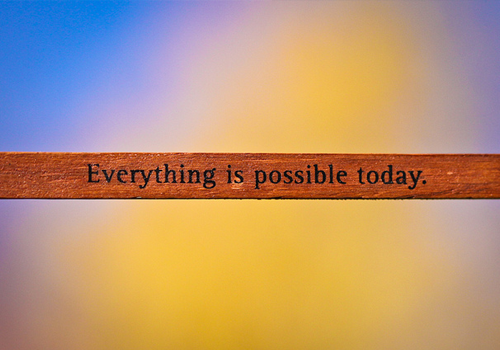
Writing a first draft requires a unique set of skills. All month, we’re asking authors to look back on their past first drafts… and the lessons they’ve learned from them. Today, Carrie Mullins, NaNoWriMo participant , shares the most important lesson she learned from finishing a novel draft:
I’m new to coffee. I can indulge in its smell, appreciate its warmth, and doctor up a mean mug. I just can’t drink more than half of it.
But I can finish a draft of a novel.
I just recently learned that I’m capable of this. Over the years my books have fizzled out—no bang, no memorial. But there was something different about this piece.
I started clocking in, concentrating on the job I wanted. I’d think about my book endlessly with so much thrill that I easily picked writing over any other hobby. Eventually the first draft does end if you’re putting in the work, and you can keep focused long enough to see it.
Once I reread it (a few months later), I had surprised myself. The characters felt like they lived beyond the story and their interactions were strong. Discovering this makes me want to continue writing.
Understandably, I had also made some mistakes. The plot was a simplistic string of events and there were glaring errors in how it connected. Rather than propel forward, it followed the characters casually as they moved through their setting. For editing this round, I marked scenes that need more vigor. What I learned for next time: begin by not taking it so easy on your characters.
I had an outline as well, which would have helped if I had used it to its full potential. Some authors prefer to discover the story as they go, but I like having a map to get started. Problem is I used the tool poorly; I didn’t outline strong enough to see problems in advance. What I learned? Outline better from the beginning, and analyze your outline for gaping flaws that you can fix before you fully create huge scenes that you’ll be sad to cut.
There are more books I want to write, and now I know how to handle them. When doubts come up, I’ll know I’ve done it once before. If it takes longer than I’d thought, I’ll grit my teeth and put in the time. If I’m afraid I can’t pull something off, well, that’s for the second draft. So my plan is to:
complicate the plot, find gaps early, and never give up.Finishing a first draft can be tough, but everything comes down to this: I can either make excuses, or I can write a book. And I’m finally confident in my choice.

Carrie Mullins is a writer, gamer, East High Wildcat, and professional tree-hugger. Aside from her environmental degree, she also knows how to eat a lot of pizza and be picky about her keyboards. She writes novels in her spare time alongside her boyfriend and her warrior cat. Her website is Deer Steps Writing.
Top photo by Flickr user theloushe.
September 9, 2015
Designer Q&A: Eric Nyffeler on the NaNoWriMo Library
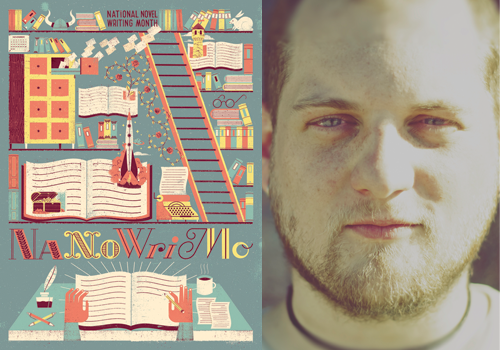
Every year, we roll out a brand new theme for NaNoWriMo, complete with a new poster, T-shirts, mugs, and more. Last year, we turned NaNo into a steampunk-influenced, Victorian, anything-could-happen Boundless Novel. This year, we’re inviting you to check out your imagination at “The NaNoWriMo Library.”
Designer Eric Nyffeler shares his inspirations for this year’s beautiful poster, and ruminates on the ideal library:
You did an amazing job of bringing our 2015 theme of “the NaNoWriMo Library” to life. Tell us about the inspiration behind your design!
When I was first told that this year’s concept was “The NaNoWriMo Library,“ I immediately began cackling with excitement. I love the aesthetics of old books and libraries. One of my favorite pastimes is wandering around the shelves and stacks of libraries and pulling out books at random. I have discovered many of my favorite artists and writers that way.
My first task was deciding if I wanted the library to be inside the writer’s head or an actual physical place. After a handful of concepts and sketches, I arrived at a happy compromise; a real flesh and blood library where the books and stories were quickly coming to life. Best of both worlds! Once we settled on that concept, it was simply a matter of figuring out how to cram in as many library and NaNoWriMo references as I could.
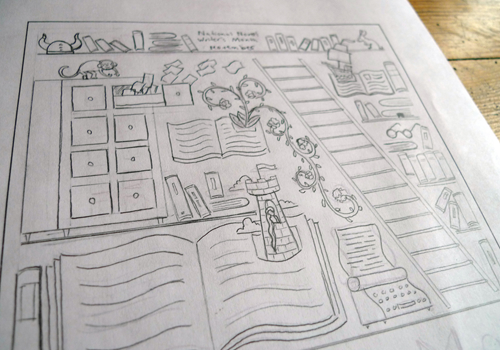
One thing that awed us: you hand-texture your designs. How does that go?
While I do a significant amount of my drawing and layout with a computer, I’ve always been enchanted by the aesthetic and look and tangible feel of design from older times. None of my work feels complete to me until it’s been textured and worn and distressed.
While I have a handful of different methods for texturing and distressing my work, my go-to method is the use of old photocopiers. I have a collection of old, early-80s, toner-based copy machines. These machines have all seen their fair share of usage, so the copies they produce tend to be worn and mottled. I print off my illustrations, piece by piece, section by section, in black and white, and then run each piece through the copier, trashing them up in unpredictable ways. These textured pieces are then all scanned back into the computer, where they are recolored and added back into the illustration.
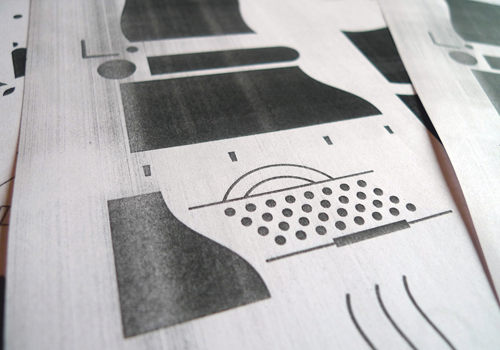
Ideally, the final design has all the warmth and handmade feel of vintage illustration work, but with all of the practical usage of contemporary, computer-based files.
That’s so cool. We have to ask this, because Tumblr: if you had to, how would you describe your aesthetic?
While describing one’s own work is one of the most difficult task ever, I would probably call it a "trashed out version of American Modern design.” I don’t know if that’s 100% accurate, but I don’t think it’s entirely wrong at least.
I’ve always loved the geometry and flat panels of color in mid-century illustration and design. I love that there is a focus on stylization and simplification rather than realistic rendering. I love that I can take something as simple as circle and turn it into a tree or the sun or a face or a lake without having to be concerned about making it look exactly like it does in real life.
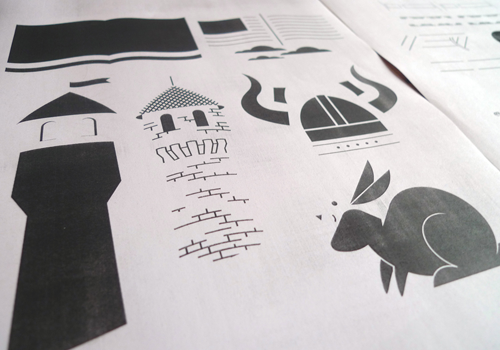
The stylization works so well for this poster. Now, if you could design an actual personalized library, which sections would be most prominent?
Obviously the art and design section would need its own wing, but as far as novels go, I would make sure it was stocked with full collections of Haruki Murakami, Kurt Vonnegut, and Raymond Carver. There would also be entire wing dedicated to the books of Chris Ware.
You’ve designed posters for concerts, in addition to vinyl covers. What music inspires you?
My entire career in illustration stems from my work in the music industry. I first fell in love with design while making merch and album art for my old local bands and somehow that snowballed into working with a dozen or so Grammy winning musicians. It’s been a strange path so far.
Music is definitely my number one inspiration when I work. I have painfully eclectic tastes in music, much to the chagrin of my studio mates. An average day will find me bouncing back and forth between twangy folk to brutal black metal over to droned out synthpop back into hour long ambient-drone songs.
What advice would you give to creators?
Never go halfway. You are the only one who really knows how far a creation can go, so it’s entirely up to you to push your work all the way to its limit.
And the big question: what would the novel you write for “the NaNoWriMo Library” be about?
If I were to tackle that massive task, I would like to think I could come up with some sort of Hobbit-esque adventure with a cast of damaged but lovable misfits, based on myself and all my closest friends.
Eric Nyffeler (occasionally operating under the name Doe Eyed) knows a thing or two about simple shapes, fuzzy textures, bright colors, patterns that make your eyes vibrate, bad jokes, and the occasional dirty drawing. Based out of Omaha, Nebraska, Eric’s work has charmed the editors of publications such as Communication Arts, Print, HOW, Fast Company, and The Washington Post, and has partnered with brands such as Target, Airbnb, and Whole Foods Market.
September 4, 2015
Wrimos Around the World: “Swallow Your Fears and Keep Moving.”
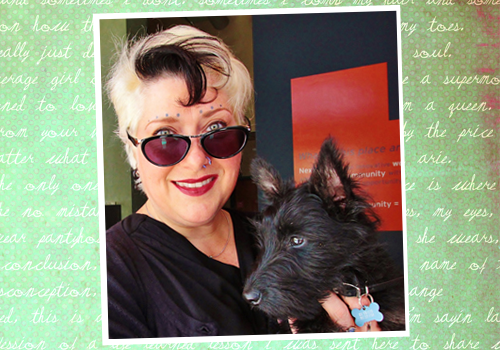
One of the best parts of NaNoWriMo is the incredible community of writers behind it. Today, Lise Quintana,
creator of the Lithomobilus platform and head of Zoetic Press, shares how the lessons she’s learned from NaNoWriMo have applied to her many entrepreneurial projects:
When did you first participate in NaNo, and what drew you to it?
I found NaNoWriMo in 2002, when a colleague emailed me an article in early October saying “These people are crazy.” I signed up before I responded to his email. For my first NaNoWriMo, I have to admit: I cheated. I started writing in mid-October, and by Halloween, I had something like 15,000 words because I was terrified that I wouldn’t be able to finish on time, and I’m a very competitive person…
Then in the wee hours of the morning of November 1, my grandmother died. I abandoned my original story and began writing something different for her. I took a few days off to drive to Phoenix for her memorial, and I dictated my story to my husband, who typed it on my laptop while I drove. Then just before Thanksgiving, I was laid off from my job, and I threw myself into the story even more. In fact, my next job came as a result of a person I met at a NaNoWriMo write-in. I ended the month with 130,000 words, but still spent until January finishing that novel.
What are the most important creative lessons you’ve learned from NaNo? Have those lessons influenced your life at large?
The most important lesson I’ve learned is that you can’t move to the second stage of a project until you’ve finished the first. You can’t edit your novel if you haven’t finished a first draft. You can’t start marketing a product that’s still in development.
The second biggest lesson has been that I need to swallow my fears and keep moving. There have been so many times when I’ve thought “I don’t know what I’m doing,” but I’ve learned that progress is only made when you’ve ventured out of your comfort zone. No one has ever written the story I’m writing before, and it scares me. No one has ever created the projects I’m creating. I’m the only one who can do these things.
If you could describe the novel you’re currently working on in the manner of a Don LaFontaine voice-over, what would that sound like?
First, this is absolutely the best exercise I’ve ever done in terms of creating a summary. Okay, here goes:
In a world where being yourself risks not just your life, but your immortal soul, one man will take on the town, the Church, and God for the one he loves.
Your life as a writer has led you to become an entrepreneur. Can you tell us what Lithomobilus is?
My 2010 NaNo-novel was a fantasy novel that had six point-of-view characters in three places in my fictional world. The dilemma I faced was that no matter what I was writing, there was always action going on somewhere else I felt the reader would miss out on.
I got to thinking about creating a huge novel with many points of view and allowing the reader to follow the action however they wanted, but realized that there was no way to display that. I come from a strong DIY background, and when I discovered that the thing I needed didn’t exist, I set out to make it.
You also founded Zoetic Press. Does selecting stories to publish and working with authors influence your own writing?
It’s less that it influences my own writing, and more that my writing gives me confidence in my abilities as an editor, and my editing gives me confidence in my writing.
One of the most important parts of being an editor is being able to understand specifically where a piece doesn’t work for me. Maybe I don’t connect with the main character, or maybe the sentences are too repetitively structured, or maybe the imagery is flat. As an editor, you can’t be a lazy reader and just say “I didn’t like it.” You have to do better than that.
As a writer, I can think back to everything I’ve edited and put that into practice. Vary the length and structure of my sentences. Make sure that every image I use furthers my novel’s themes and motifs. Construct my narrative to keep the reader following along, eager for the next sentence.
You’re going to be a volunteer Municipal Liaison for NaNoWriMo this year! How does writing with others help one’s creativity?
I’ve never had a problem with creativity, but I do know that having a room full of people around allows you to shout out “What should I name my 12-year-old Inuit ninja?"
And someone will yell out a name, and then someone else will say "That’s not Inuit, that’s Tlingit,” because writers know some pretty obscure stuff.
And that inspires everyone in the room to add something to their story. The plot bunnies and word sprints and writing prompts are amazing for those who maybe come into it more to have a fun community of writers.
For me, the most important part isn’t the creativity—it’s being given permission to focus on nothing else than writing. That’s the hardest thing in the world as the head of two companies and a person with a family—carving out that time and not feeling guilty about it. When you’re heads-down with twenty other people, everyone is supporting you in doing nothing but writing. That’s so valuable.
What should people expect when they start writing with others?
If you’re a writer, the thing you should expect is silliness. I’ve never been in a large group of writers where there wasn’t a huge amount of merriment and laughter. I think it’s partly just the relief of no longer being the weirdo in the group—we’re all the weirdo in the group, and we’re running with it.
Next, you should expect that when you’ve got your headphones on and you’re really going, we know enough to leave you alone. And then when you look up and shout “I just finished another thousand words,” we’ll cheer for you.
If you’re not a writer, expect to see an entire room full of people not speaking to each other. Everyone will have their laptop/pad of paper/patch of bare skin, and will be furiously writing away. Most will have headphones on listening to music as they write. And for long stretches of time, they won’t be talking to one another. And they’re all having the time of their lives.
What’s the most important piece of advice that you have for any reader and/or writer?
There will be times that you want to cry for your characters. Cry. There will be times that you are angry at them. Hit something. There will be times that you want to laugh at, with, or for them. Laugh. Let the emotions of your story really, truly affect you, because those tears, that anger, that laughter will absolutely show on the page. If it didn’t move you, it’s never going to move anyone else. The first person who should be emotionally overwhelmed by your book is you.
Lise Quintana is the creator of the Lithomobilus platform and head of Zoetic Press. She’s an author whose short stories appear regularly in places like Drunk Monkeys, Extract(s), and Red Fez. Her forthcoming novel will be even more forthcoming if she can whack up the ginger to submit it somewhere.
September 2, 2015
I Spy with My Critical Eye: Books and Baking Require Time
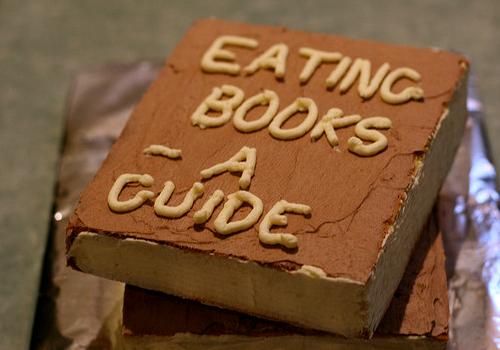
Writing a first draft requires a unique set of skills. All month, we’re asking authors to look back on their past first drafts… and the lessons they’ve learned from them. Today, Penny Warner, author of mystery series including Death of a Chocolate Eater , shares why cake-baking and writing have a lot in common:
I see writing the first draft of a novel as sort of like baking a cake. It’s the foundation for the fancy dessert you end up with, but you can’t frost it and add all those pretty roses without first baking that cake.
Writing the first draft of a mystery novel is painful. Although I love the idea of starting a new story, I’m also overwhelmed by all that white space under the words: Chapter 1. So the first thing I do is create an outline from an idea…
For example, my latest mystery, Death of a Chocolate Eater, began with—of course—my love of chocolate. My protagonist works in a food truck with her eccentric aunt, and they’re participating in the annual San Francisco Chocolate Festival. Voila—I have my characters, setting and the beginning of a plot.
From that kernel, I jot down an outline that helps me know where I’m going—it’s like a writing recipe. The next step is fleshing out the outline to weave an intriguing story full of plot twists, interesting characters, clues and red herrings, and so on. That takes time and stick-to-itiveness, so every day I set myself a goal of writing half a chapter—5 pages, give or take. I don’t look back; I just keep going until I reach my total word-count of around 80,000 words.
When the manuscript is finally “done,” I begin the process of rewriting—which I love. Now I can “decorate” the story, have fun with the language, etc.
One last thing—I don’t believe in writers’ block. Imagine if you were a teacher—which I am as well—you really can’t go into a classroom and tell the kids you have “teacher’s block” so class is dismissed. Same with writing: you just have to do it, and see where it takes you. And to my surprise, I generally like the end result.
Plus, I eat a lot of chocolate as I go. I mean, everyone needs an incentive, right?

Penny Warner writes the Agatha Award-winning middle-grade mystery series, The Code Busters Club, the adult mystery series, How to Host a Killer Party, and the new series Death of a Crabby Cook and Death of a Chocolate Eater, featuring food trucks and food festivals. She’s also the author of the Official Nancy Drew Handbook, and writes fund-raising murder mystery events for libraries across the country.
Top photo by Flickr user Richard Jones.
August 31, 2015
I Spy with My Critical Eye: Trusting Your Inner Writer
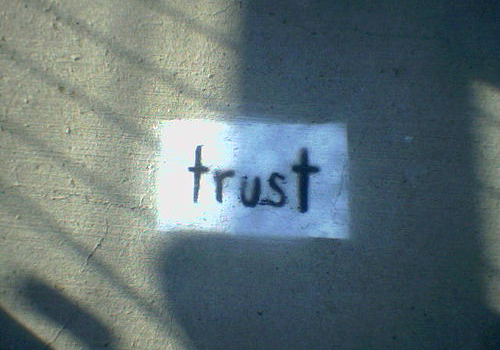
Writing a first draft requires a unique set of skills. All month, we’re asking authors to look back on their past first drafts… and the lessons they’ve learned from them. Today, Alan Averill, author of The Beautiful Land , shares how he learned to trust his own vision:
First drafts are funny. People generally assume that the poor author will have to spend the next few years mining through the dreck to pull out one little nugget of goodness. And sure, I suppose it can be like that, but I don’t think it’s a general truth. Instead, I think writers just don’t trust themselves enough to realize that first drafts are often much closer to completion than they know.
So it took me about four months to write the initial draft of my first book, then another six weeks to get it into what was more or less the final form. (And yeah, that’s pretty speedy, but I wasn’t working at the time and cranked away at it for hours every day. Unemployment! Who knew?)
I’d guess that at least 80% of the first draft is in the final draft. The typos are all gone (I hope) and I cut a bunch of stuff that wasn’t working, but the heart of the novel—the backbeat—is pretty much as-is from the initial draft.
And I’ll be honest: this worried me at first. Because I’d heard all the stories about how writers had to agonize over their drafts and kill their darlings, and here was this book I’d barfed out in five months that I thought was pretty good.
It was weird, you know? I felt like I’d missed some crucial step and the book was actually terrible, but I was too dumb to realize it. (And yes, there are probably people who read it and thought exactly that, but that’s okay. There’s always someone who doesn’t like a particular creative endeavor. It’s just part of the deal.)
The book went on to get published, people seemed to enjoy it, and I’m really happy with how the whole thing went down. I learned to trust my instincts and my work, and believe that what’s coming down on the page in the beginning is close to what the writer in the back of my brain wants it to be.
Trust your work. Trust your initial vision. Don’t look at your first draft as something that needs to be torn down and rebuilt from the chassis up. Instead, find that backbeat and fill in the details around it. Because I think the best stories are ones that come from the gut, and if you approach that first, purest vision as something easily thrown away, you could end up losing what made it really cool in the first place.
Alan Averill is the author of The Beautiful Land. He’s also written and localized dozens of video games, including Nier, Fire Emblem Awakening, and Hotel Dusk. You can find him on Twitter @frodomojo, where he tends to talk about games, writing, and the never-ending tire fire that is the Seattle Mariners.
Photo by Flickr user purplejavatroll.
August 28, 2015
I Spy with My Critical Eye: Let Yourself Get Lost In Your First Draft

Writing a first draft requires a unique set of skills. All month, we’re asking authors to look back on their past first drafts… and the lessons they’ve learned from them. Today, Lisa A. Koosis, short story writer and 12-time NaNoWriMo participant , shares how she learned to paint herself into corners:
I never truly know what a book I’m writing is about until I’ve completed the first draft. Take my first year participating in NaNoWriMo, for example. I knew exactly the book I planned to write. Since I planned on expanding a short story I’d written, I knew the essential plot. I knew the characters. I knew the themes. I even knew how it ended.
Then something funny happened. Words started spilling from my pen, inky enigmas involving unplanned scenes, new characters, and bizarre plot twists. I realized I didn’t actually know my story at all…
The same has proved true every year I’ve participated, twelve years total. And it’s made me rethink how I approach a first draft. I’ve learned to follow the story wherever it wants to go, even if it doesn’t quite make sense, even if it’s the twistiest, bumpiest, hilliest road to the end. Don’t worry about getting lost. Just keep pushing forward. Don’t stop.
Write in the crazy. Write in the weird. Write in the downright awful. Paint yourself into corners, because sometimes in trying to paint yourself back out, you take yourself to amazing new places, on roads you’d never imagined. Go on and break the rules. Tell instead of show. Use adverbs. Write long, meandering flashbacks. Experiment. Do everything you wouldn’t do if you were writing deliberately, methodically, slowly.
Now, if your inner editor (like mine) won’t shut up, leave him love letters. Buy yourself colored pens, and scribble notes in the margins. Use your word processor’s highlighter feature or change your font color and type notes right between the words of your manuscript. Ask questions. Make observations. Note plot holes and inconsistencies and random thoughts and inspirations. You’ll give yourself thoughtful, useful material for revisions, without losing your forward motion. And somewhere in all that beautiful mess, is your story, the one you’ll now truly get to know.
Twelve years into my NaNoWriMo experience, and first drafts still surprise me, as does the inevitable light-bulb moment when I finally understand what my book is about. And so these days, I embrace that surprise, enjoy it, and let writing be the mystery that drew me to this craft in the first place. I hope you will, too.

Lisa A. Koosis is a prize-winning short story writer. You’ll find her work in magazines and anthologies, including Family Circle, The Poughkeepsie Journal, the Hugo-nominated Abyss & Apex, and the British-Fantasy-Award-winning Murky Depths. She is a twelve-time winner of NaNoWriMo and a NaNoWriMo ambassador. Lisa is represented by Brianne Johnson of Writers House. Visit her at lisakoosis.com or on Twitter at @MidnightZoo.
Top photo by Flickr user bikertect.
Chris Baty's Blog
- Chris Baty's profile
- 63 followers



